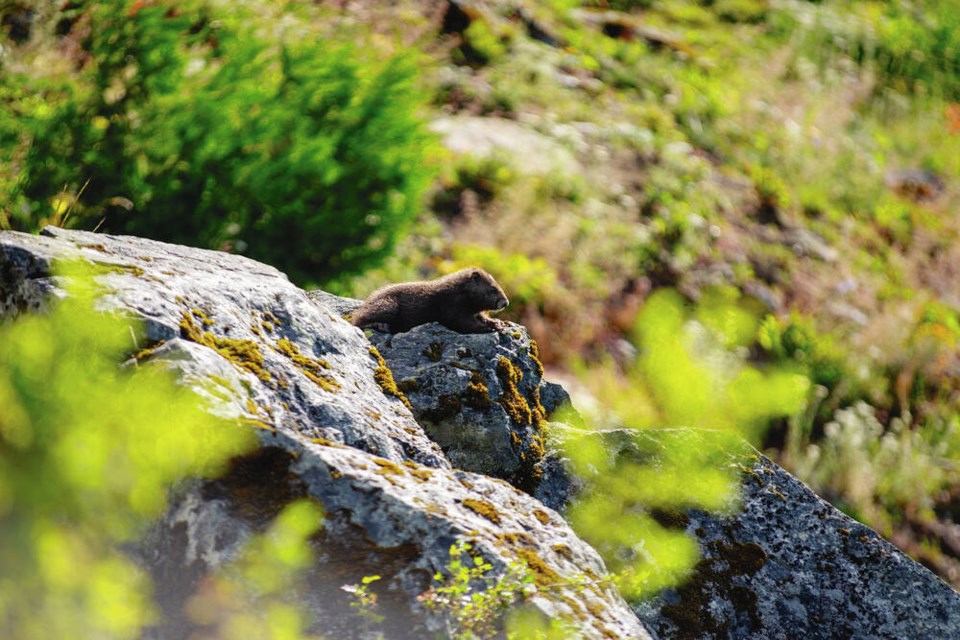The critically endangered 91įŁ┤┤ Island marmot is experiencing a baby boom.
So far, 86 pups have been born in the alpine regions of the Island — a record number — and scientists and volunteers have yet to finish their count.
Adam Taylor of the Marmot Recovery Foundation said it’s the highest number for wild-born marmots since 2011, when 75 babies were born.
The latest pups were from 32 litters, recorded in 17 colonies.
“There are probably more and that’s exciting for the species,” said Taylor, who credits good weather, lush vegetation for feed, successful hibernation and a little luck for the baby boom.
With the new pups, he estimates 316 91įŁ┤┤ Island marmots are now living at 30 sites, most in major colonies in the alpine of either the Nanaimo Lakes region or Strathcona Park.
A final count won’t be completed until early December, when all the remote cameras are collected and about a terabyte of data is uploaded and analyzed.
But that’s still a big improvement from the 200 marmots recorded in 2022, when about 50 animals were lost and there was virtually no reproduction in the wild due to low snow packs and drought that reduced food sources.
Taylor said that for marmots to be able to reproduce, “a lot has to go right in their world.”
“They have to have good-quality habitats with food sources that allow them to hibernate and conserve their body weight. We’ve had drought years, and that has hurt them in the past.”
Taylor also cautions that September is often a deadly month for the marmots because of predation, usually by cougars, so he expects the numbers to fluctuate.
“These pups have a long journey ahead of them and the first step will be to add enough body weight to survive hibernation.”
He said while the mountain grasses and flowering plants are still lush right now — thanks to some recent heavy rains — pups do not have a lot of time to pack on the weight, since snow can arrive as early as September or October in high-elevation colonies.
In July, the foundation and its partners released 67 captive-bred marmots into the alpine to bolster the population. The yearlings were part of breeding programs at Mount Washington and at the Toronto and Calgary zoos.
Since 2003, nearly 700 captive-bred marmots have been released to the wild, and the slow recovery continues despite a high mortality rate from predators such as eagles and cougars and harsh weather conditions. In 2013, the population hit a high of 346.
91įŁ┤┤ Island marmots — Marmota vancouverensis — are B.C.’s only endemic mammal and Canada’s most endangered mammal species, and considered one of the most endangered mammals in the world.
A 2020 study by the International Union for Conservation of Nature listed the marmot as part of a group of 48 birds and mammals worldwide whose extinctions have probably been prevented by conservation actions.
The recovery effort was initiated in 1997 by the Marmot Recovery Foundation, the province of B.C., the Toronto Zoo, Calgary Zoo, Mount Washington Alpine Resort and timber companies such as Mosaic Forest Management.
>>> To comment on this article, write a letter to the editor: [email protected]



